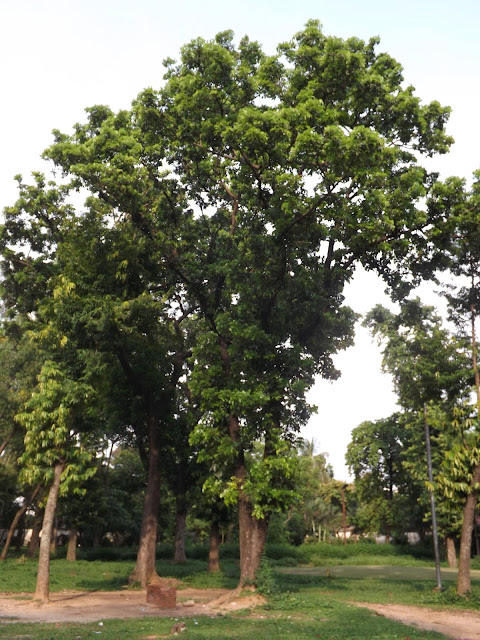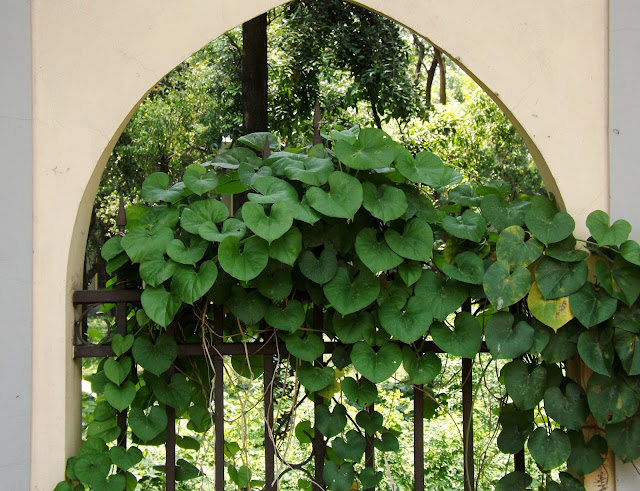Mahogany, Swietenia mahagoni
Mahogany (Swietenia mahagoni, family: Meliaceae) is a medium-sized
semi-deciduous tree attaining a height of 30-35 m. It has short but strong base, large canopy,
many heavy branches and dense shade. It is native to United States and the Caribbean islands. It is grown as an ornamental tree in tropical regions of the world. Its wood is the first choice for making high-quality furniture throughout the world.
The bark is furrowed and dark gray in color. In Bangladesh, it is planted as ornamental tree beside roads, in parks and is planted by name of social forestry.
Common names: Mahagni, Mahogany, West Indian mahogany.
The leaves are compound, 60 cm long, leaflets 4-10 pairs, each lance-shaped
leaflet 20 cm long and 5 cm wide; terminal leafletless. Young leaves are blood red, quickly becoming a bright, light green and
darkening as they mature.
The flowers are very fragrant, greenish-yellow, 6-8 mm across, borne on axillary panicles. Flowers
are unisexual and the tree is monoecious.
The brown fruit is a woody capsule stands upright, 5-10 cm long and 3-6 cm broad, containing numerous
winged seeds. Development from flower to mature fruit
takes about 8-10 months.
Pollination is by insects. Usually 1 flower of the
inflorescence develops into a fruit; the other flowers are aborted even if
fertilization takes place!
The tree fruits well and produces fertile seeds, sometimes
as early as at 20 years of age. The plant has been brought from Honduras to Bangladesh.
The bark is used as a decoction for diarrhoea, as a source of vitamins and iron, and as a medicine to induce haemorrhage. The bark is also used to clear blood, increase appetite, and restore strength in cases of tuberculosis.








Comments
Post a Comment